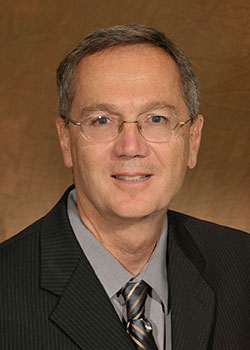 John D. Tickle Associate Professor Lawrence Heilbronn’s research includes the study of radionuclides, atoms with excess nuclear energy that can be applied in different ways.
John D. Tickle Associate Professor Lawrence Heilbronn’s research includes the study of radionuclides, atoms with excess nuclear energy that can be applied in different ways.
One such use is critical in the fight against cancer, where radionuclide therapy can help treat the disease through the targeted use of particle emitters utilizing alpha, beta, and Auger electrons attached to biomolecules.
“Targeted Alpha Therapy” involves attaching the radionuclide to a molecule that, when injected into the body, seeks tumor cells and stays there once the tumor site is located.
This approach is effective in treating cancer because alpha particles deposit a lot of energy in a very small area, allowing for that energy to be deposited in the tumor while sparing the surrounding healthy tissue from damage. The method has shown extraordinary results in clinical trials, and as such, the demand for short-lived alpha emitting radionuclides is expected to grow.
Heilbronn is working to make sure such radionuclides—particularly actinium 225 (225Ac)—have a supply that can meet their increasing demand.
—Lawrence Heilbronn
The US Department of Energy has backed Heilbronn’s work with $235,000, with a focus on radionuclides that emit alpha particles like 225Ac and its daughter product, bismuth 213 (213Bi).
Thorium 229 (229Th)—an isotope from which 225Ac can be generated—is key to Heilbronn’s research, which involves generating crucial cross section data for novel methods to produce 229Th through three specific aims:
- The determination of the 230Th(n,2n)229Th reaction cross section from 7 to 20 megaelectronvolts (MeV);
- The determination of the 229Th production cross sections through the irradiation of 230Th and 232Th with protons and deuterons;
- The development of a uniformly distributed 230Th target for charged particle irradiation.
The research will be conducted in collaboration with UT, Oak Ridge National Laboratory, and Lawrence Berkeley National Laboratory, utilizing the 88-Inch Cyclotron at the latter.